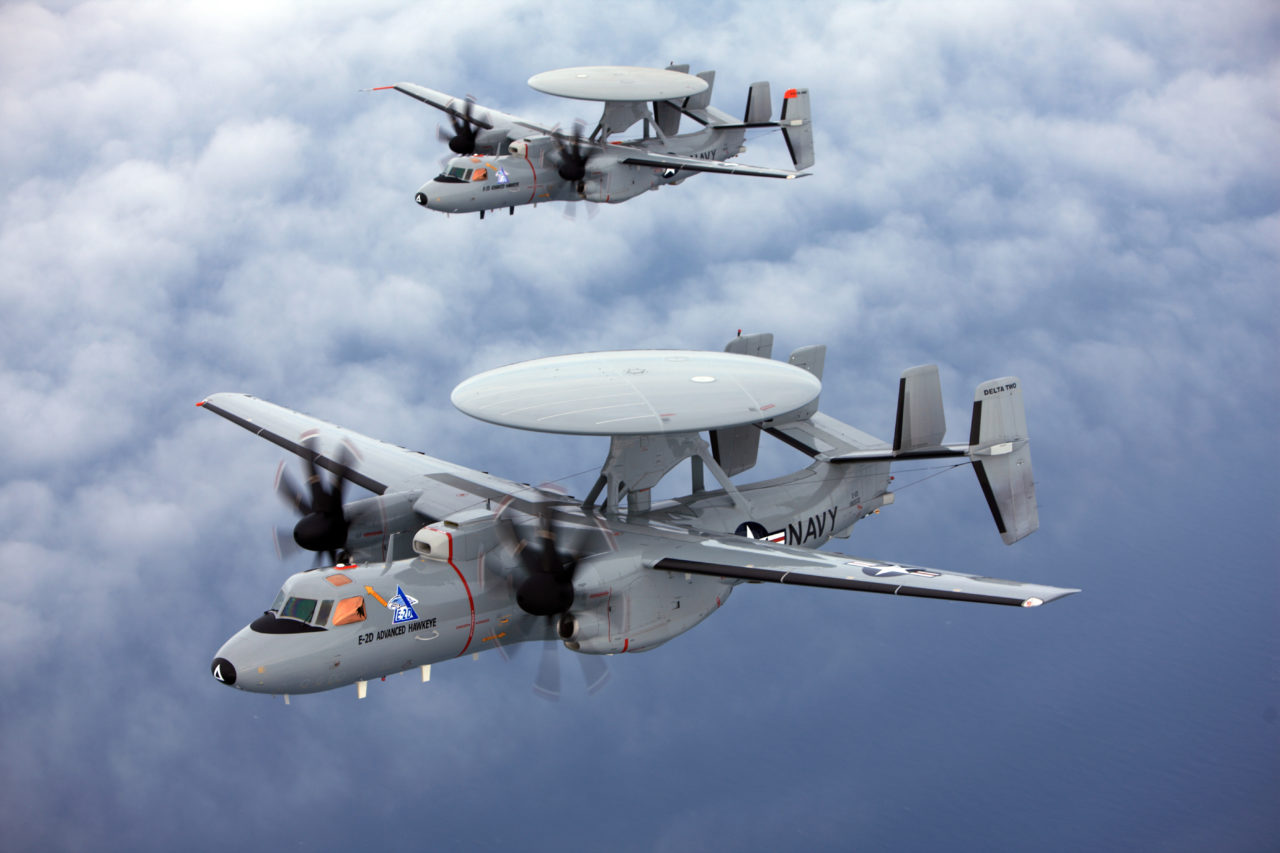
The E-2D Advanced Hawkeye, one of the launch platforms for EGI-M. (Northrop Grumman)
NATIONAL HARBOR, Maryland — The business case for Northrop Grumman’s assured position, navigation and timing (A-PNT) solution is tricky, on its face — GPS is better, and as long as you have GPS, you don’t need it.
Naveen Joshi, Northrop’s director of A-PNT readily admits that. But, the Defense Department is starting to worry about those fringe cases when GPS isn’t available, such as when it is being jammed. The modernization of GPS satellites to broadcast M-code, or the new standard military code GPS signal, to combat jamming efforts requires updated receivers, ironically providing Northrop an opportunity.
That’s why the U.S. Air Force awarded the company a $59 million engineering and manufacturing development contract in February for its embedded GPS/inertial navigation system (INS) — Modernization (EGI-M) technology, a follow-up to a $49 million development contract awarded in 2017.
The lead platforms for EGI-M are Northrop’s E-2D Hawkeye and Lockheed Martin’s F-22 Raptor, but it is designed to be scalable to almost anything.
EGI-M is “a good fit for the vast majority” of airborne military platforms, Joshi said, because “modernization is needed across the services because of M-code.” It fits on all manned platforms and all larger drones, and Northrop can sell a smaller version by cutting out the inertial system for smaller drones that have no inertial system to replace.
Legacy solutions were about tapped out on processing capabilities, Joshi said. EGI-M upgrades to two cutting-edge processors — one can handle everything it needs to do now and one dedicated to later applications to provide some future-proofing. That processing power synergizes with the other major change, a switch to an open architecture, to turn EGI-M into a fusion center. The system will take in data from satellites, Doppler radar, electro-optical/infrared cameras, terrain-aimed targeting pods and more, then weave it into a tapestry of PNT approaching GPS in reliability in GPS-denied areas — which is the goal.
“GPS is a bit of a drug because it performs so well,” Joshi said. “A lot of people have a hard time answering what is good enough. People often answer, ‘Give me GPS or GPS-like performance.'”
That may sound simple, but GPS provides “very good performance on both position and time for relatively low cost and, really, universal access around the world,” he added.
Replacing GPS usually requires a compromise in one of those areas. Relying on a space-based system will get you close, but might introduce vulnerabilities. Substituting a combination of other radars can work, but demands that you do additional planning ahead of time and know what the operating area will be, generally.
A challenge facing Northrop with EGI-M, as with any open system, is security; the second processor helps solve that.
“If you have the space available, like you do with EGI, you can have it both ways,” Joshi said. “You create an enclave and have an area dedicated for experimentation.”
The additional space means that Northrop doesn’t have to push any software into the ecosystem with everything else until it is more proven, lowering the risk from compromise.
That software could be from anyone. Thanks to the architecture, neither the sensors that feed EGI’s fusion system nor the software running on it need to be from Northrop Grumman, Joshi said. DOD wants the ability to move quickly, integrate more and spiral capabilities, and Northrop is following that directive with EGI-M, trying to make it attractive by leveraging whatever is available to improve its output.
“We don’t really care where the observables come from,” Joshi said. “As long as they are there, you can cross-correlate them.”
In addition to a processing upgrade, handling that influx of data also demands improved input/output capabilities, where Joshi said Northrop has been constrained in the past. The company upgraded to high-speed buses that allow data transfers measurable in gigabits.
The next step is what happens with the information. Northrop favors a hub-and-spoke model where useful information is centralized, but Joshi said “that could be expensive” and nobody has really put any effective wide-scale method of dealing with the decentralized data into practice. Currently, the focus is on demonstrating the value of A-PNT.
Lab testing is expected to start this year before the testing of representative units in 2020, according to a Northrop representative. The company will be ready to support production fielding in 2021, though developmental and operational testing will determine customer timelines.